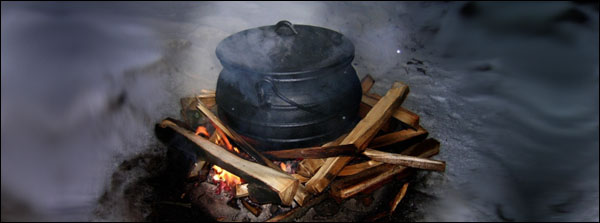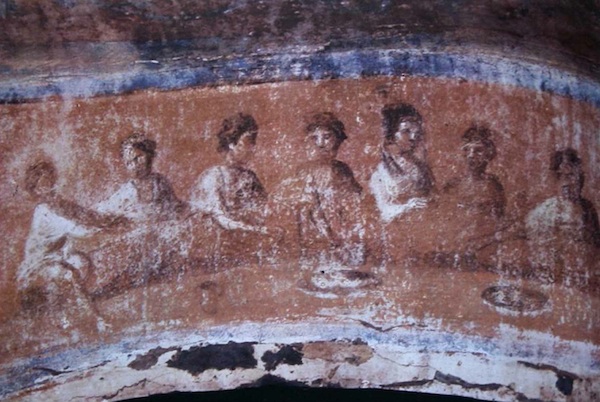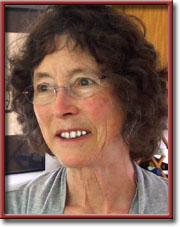Our Lives As Told By—Vanilla

“You never know how close any one thing is to the jugular until you have run it into the ground with a group of companions shortly to become your close friends.”—Anita Sullivan
The Highest Cauldron
By Anita Sullivan

EUGENE Oregon—(Weekly Hubris)—1/13/2014—Now that the incandescent light bulb is officially obsolete . . .
And don’t get me wrong, I’m in favor of more efficient use of electricity, the most efficient use being none at all.
But the incandescent bulb, in some small way, was meant to resemble daylight. The substitutes are bold, practical, technologically sleek, and cool, heartless, and just a teensy bit ugly. Precisely the values of our present civilization in a nutshell. Not from a real nut, of course.
Which brings me to mention a slightly more vital human “thing” that’s gradually being edged into obsolescence: friendship. I don’t mean the recent switch of “friend” from noun to verb—there’s something rather quaint and almost cheerfully pathetic about that—maybe even subversive (language always finds new ways to grow). I’m talking about real friendship between actual physical human beings. I think it’s probably as rare as it ever was, and every bit as much longed-for. What I think has changed is that we don’t actively seek it out much these days.
We don’t seek it out because we don’t have the energy, or we think we have it already, or we’ve forgotten how wonderful it is, or we don’t even want anything anymore that requires emotional effort, that requires straightening up from gazing at our screens.
“I have lots of friends, but not many close ones,” used to be a common complaint. Do people even say that any more? “Friend” used to mean “close friend,” by definition. Close friends were as essential as olive oil, bread, and wine. You put things aside for them; for them you could still turn into a real person again (growl, roar, hug, cry) even if you had almost lost the habit.
Friends were people you had real conversations with. Regularly.
Real conversation (under the grape arbor in the village square, stopping often to gaze vacantly into the pleached* branches over your head, to watch the shadows falling across your wrists, your glass, the hair and eyes of your companions. . . .)
The only people I have this kind of conversation with are my husband, my close relatives, and a few people I have known long enough so that somewhere along the way our relationship spontaneously combusted into intimacy. Yet there are plenty of people I see regularly enough to “touch antlers” with (each of us assuming the other has better things to do than to actually stop and let conversation accomplish something vital). How could we go a little deeper?
We get stuck at the entrance to the labyrinth. No matter how comfortable you think you are, at a party or in a small group of colleagues, there is a point where the familiar assumptions trail off at the edges; you can sense the dark mouths of many caves at the end of the room, splintering into that enormous maze, the human spirit. You are unable to figure out how to go there together for a closer look. Occasionally, a spark flies out but, mostly, you each recount the latest dramatic episodes in your life and listen to theirs. It’s more of a ceremony than a full experience.
What to do, what to do? How can we conspire to break through to that next human level—the inner life that we all hold in secret?
Not the most inner-life, of course—not the sacred room where each of us keeps our private lightning bolt like Zeus, the windowless sanctum where even his fellow Olympian gods were forbidden to go (except, rarely, his only daughter, Athena). Even I seldom enter that room-of-my-own; rather, I stand on the threshold with the door barely cracked, squinting against my own light as it ekes round the cracks and spills onto me, reinforcing and refreshing the outlined shape of my personhood.
What if we sat around and held a conversation about our relationship to vanilla?
This could lead to so much. We pick a familiar, but somewhat unusual word, and give to it our full respect. This would not be just a different “on-ramp” to the usual set of well-worn anecdotes and opinions that we share. Instead, here would be an opportunity to break out into new territory, separately and together. Interrogate vanilla. Keep bouncing from the first received meaning, back to the word itself. Dare to ask: What is vanilla the center of in my life? What small orbit does it command? Listen, smell, grasp at straws as they drift and fall around you; call up everything you remember about the stuff in one swoop, not bearing down too hard. What would go missing in your life if you gently slid vanilla out of it completely?
You never know how close any one thing is to the jugular until you have run it into the ground with a group of companions shortly to become your close friends.
You would be remaking your own personal mythology by focusing on the entire constellation of meanings opening out from a single word. The process might be slow, socially awkward at first, but—perhaps—ecstatic in its possibilities?
Vanilla as wedge, as wick, as canopy, as symbol, as metaphor, as small dark bottle of proto-illicit joy? Prowl with this word awhile, you and each of your friends, together, talking rapidly, interrupting each other, stopping to listen and think. Take more time than you think you need. Then go back to normal. You will be a different pattern together than before.

*Note: If you’re unfamiliar with the term “pleached,” which Anita uses above in “the pleached branches over your head,” make it part of your working vocabulary: http://en.wikipedia.org/wiki/Pleaching.
